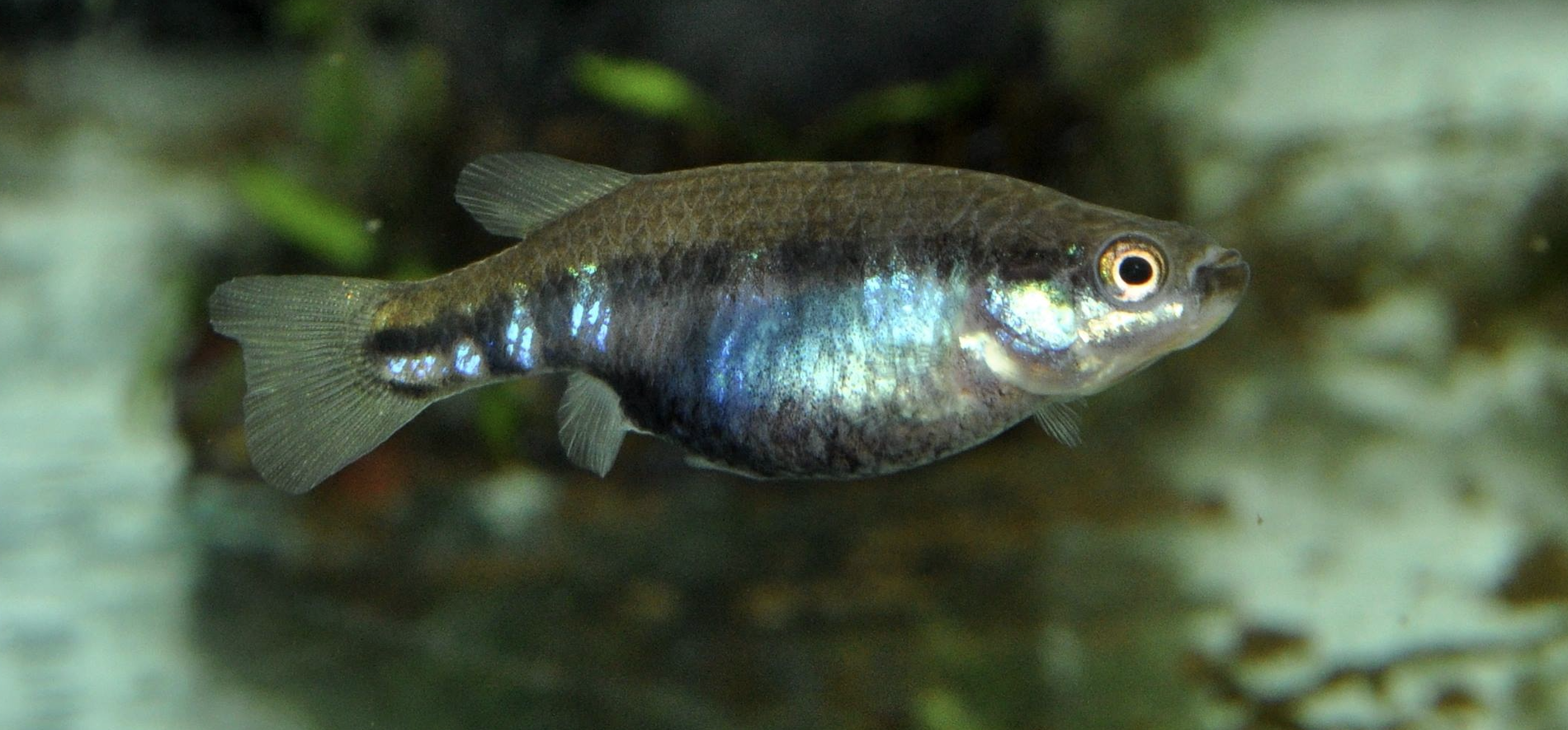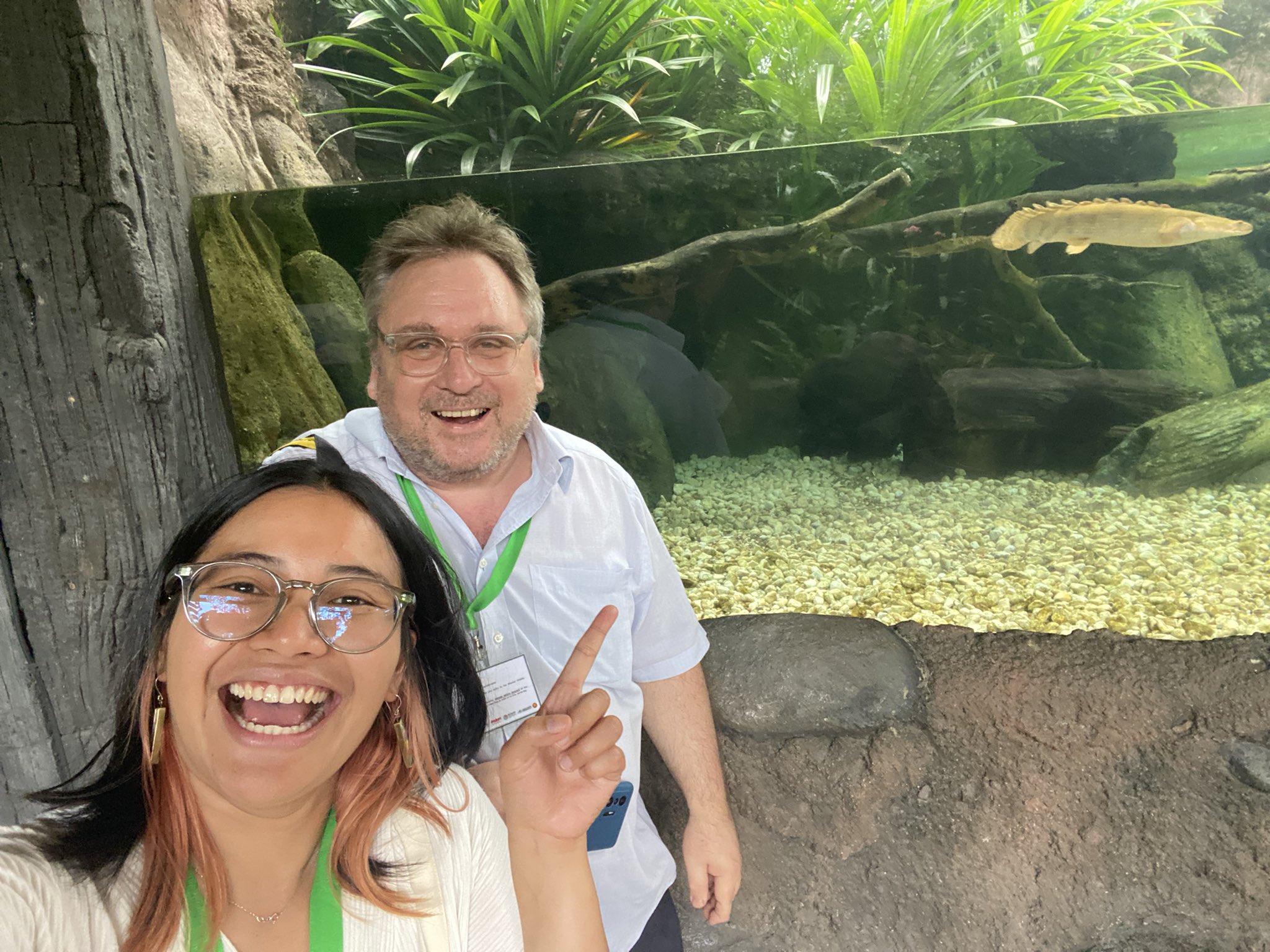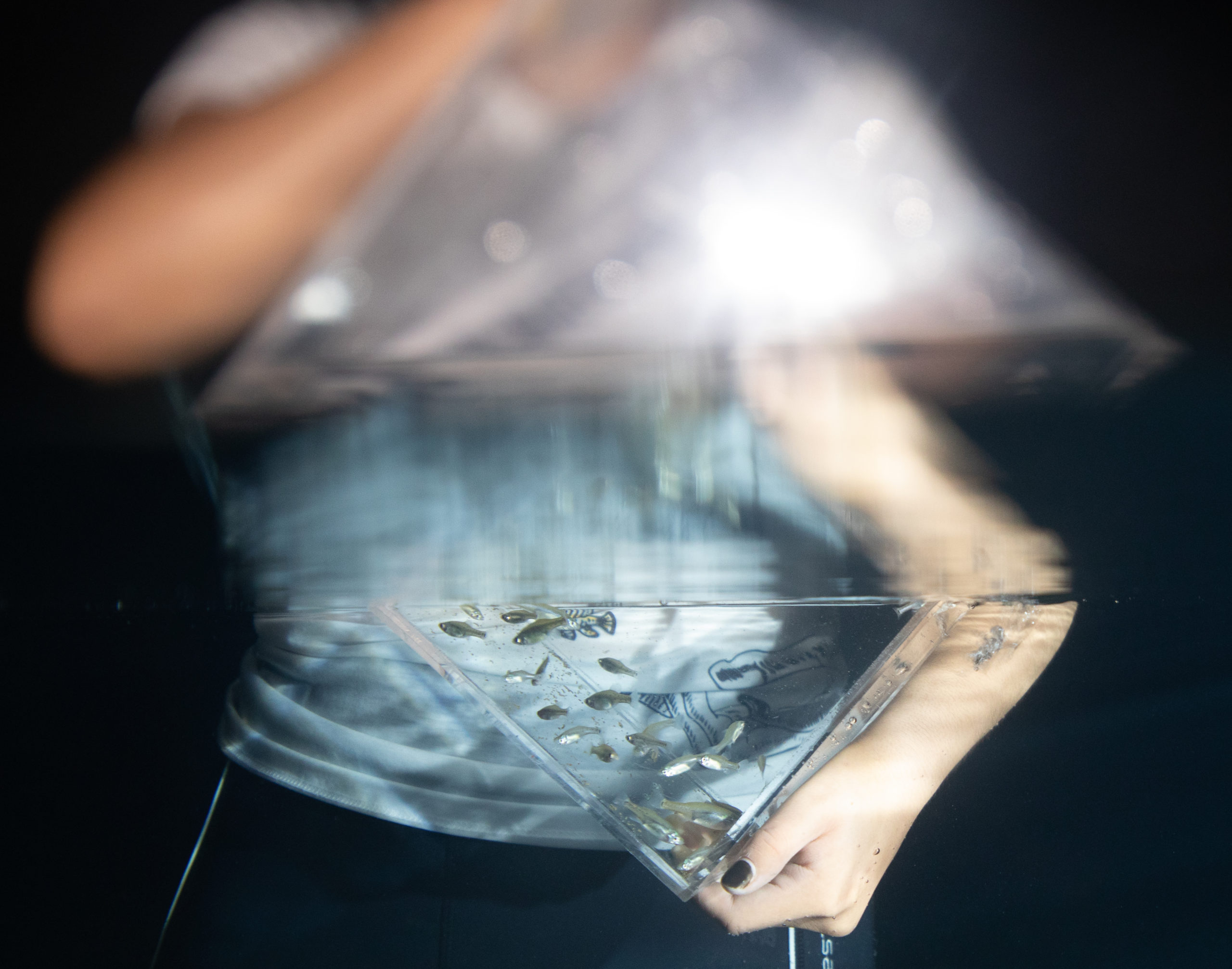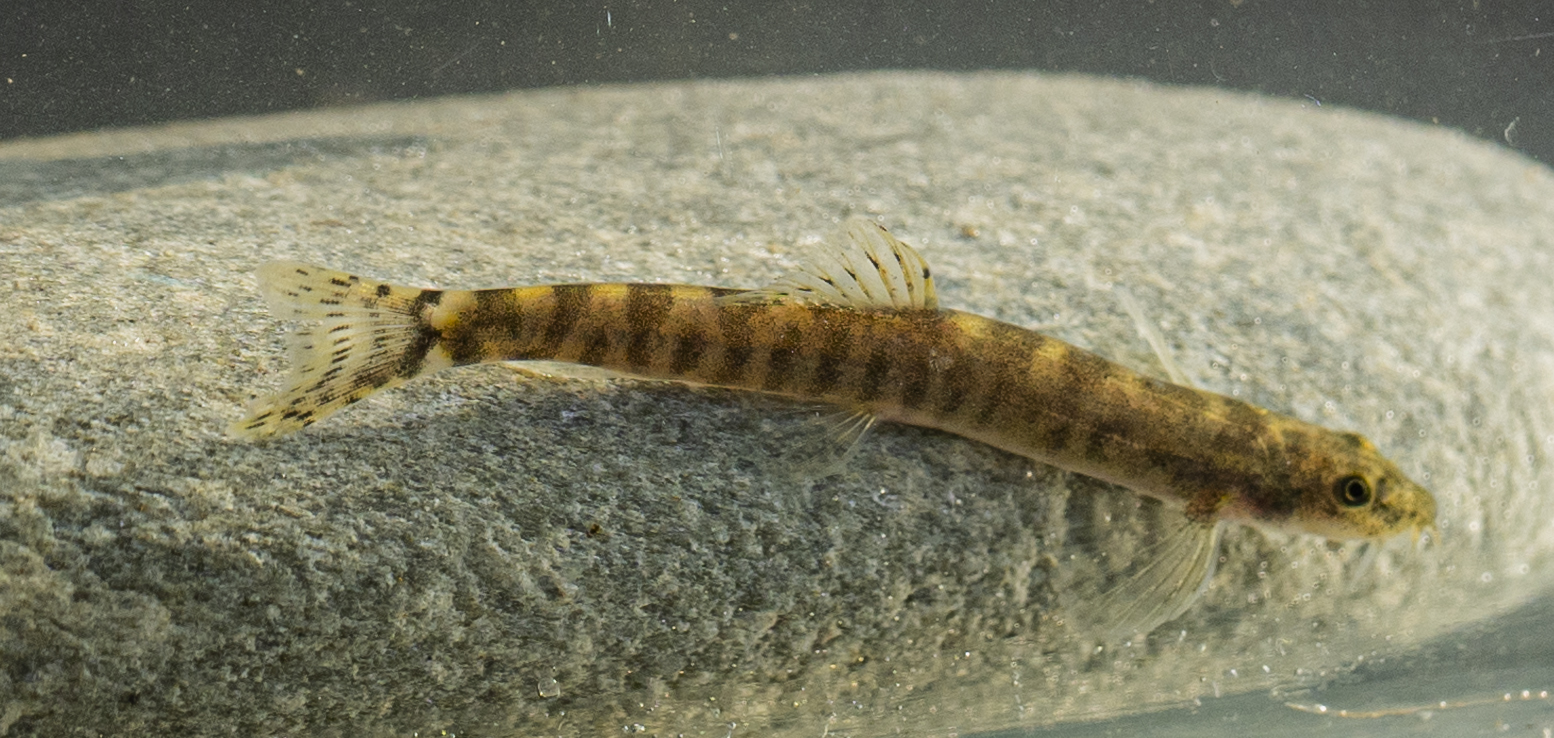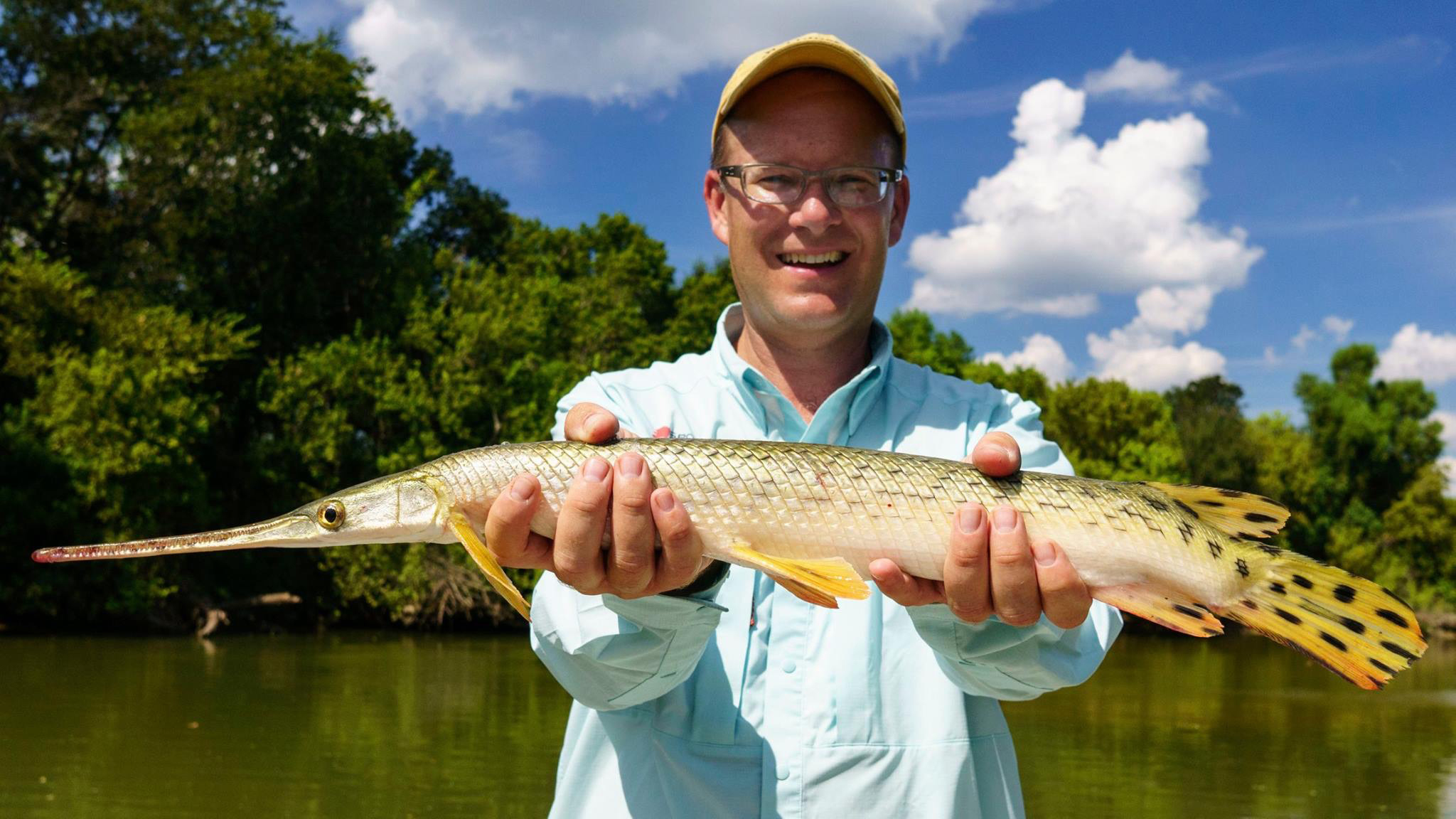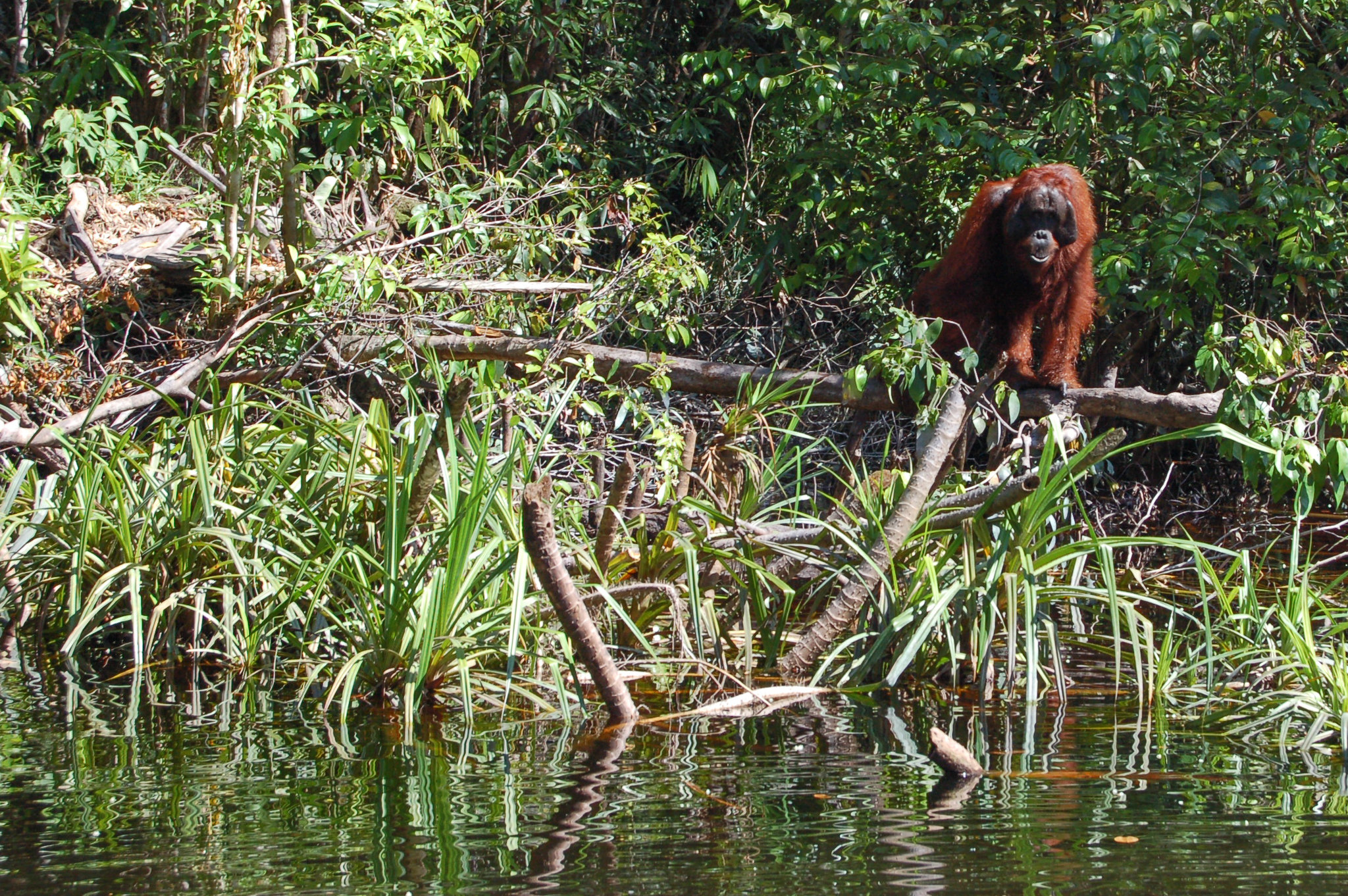
An Orangutan overlooks the Sekonyer River in a peat swamp forest in Central Kalimantan, Indonesia (c) CIFOR
The forests of Malaysia and Indonesia are burning again. Back on our screens are the horrifying scenes of millions of people living with extreme levels of air pollution and images of homeless orangutans and tigers, the wild icons of these great wildernesses. But there is one story of a magnificent group of species threatened by the fires that we haven’t heard enough about and that is the fishes.
It is not our first instinct to worry about life underwater when see forests burning. But the use of these fires to clear peat swamp forest for oil palm, acacia and rubber plantations is removing a habitat vital to thousands of wetland species such as fishes that are being rapidly driven towards extinction.
The permanently flooded peat swamp forests are ancient habitats that support thousands of unique species including many of the most threatened fish species in South-East Asia. One group of species are the peat swamp forest specialists from the Parosphromenus genus, endearingly known as Liqourice Gouramis.
These incredibly beautiful tiny jewels live hidden away in the murky blackwaters of the peat swamp forests. They are airbreathers living in the leaf litter in the tiny dark streams and channels that cut through the peat swamp forests, meaning they can tolerate the low oxygen levels in the water.
Scientists have only recently begun to understand the “Paros” as they are nicknamed. The first species was described in 19th century but new species are still being discovered. Where they live, they are often abundant but easily overlooked. The aquarists, the fishkeeping hobbyists, have not overlooked them. Liquourice gouramis are naturally very popular because of their incredible beauty and diversity. But they are generally hard to keep and often hard to see in an aquarium and so very few people keep them.
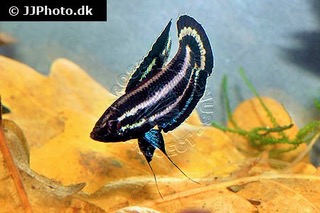
Parosphromenus harveyi, Assessed as Endangered on the IUCN Red List
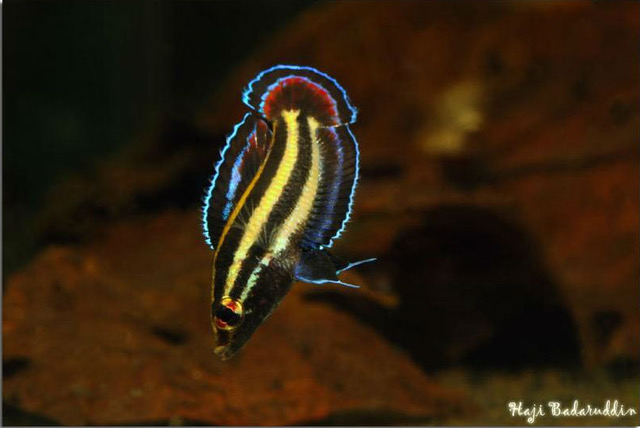
Parosphromenus alfredi, Assessed as Critically Endangered on the IUCN Red List
And it is the few people that do that may be part of the answer to their survival. The little known Parosphromenus Project, set up by a passionate German aquarist called Peter Finke has been quietly working to save these species through a voluntary effort organised by aquarists. Working across the world, these enthusiasts share information, maintain breeding populations of each species and raise awareness of the plight of these fishes. They have even begun to identify the habitats and seek to gain their protection in a variety of innovative ways.
The issue facing the liquorice gouramis is that their habitat is shrinking. Many of the species are now confined to very tiny patches and islands, some not much bigger than a football field of peat swamp forest in a sea of oil palm.
Shoal together with the Parosphromenus Project and IUCN ASAP, the Asian Species Action Programme are working with experts and partners in Malaysia and Indonesia to set up immediate action to halt any further loss of the Liquorice Gourami habitats and to secure sustainable populations of these species. This is a unique collaboration between aquarists and conservation agencies.
Next time you see the fires on the news, think of these tiny fishes that are facing extinction through the loss of these great forests.
If you want to know more, please contact us by email at: info@shoalconservation.org
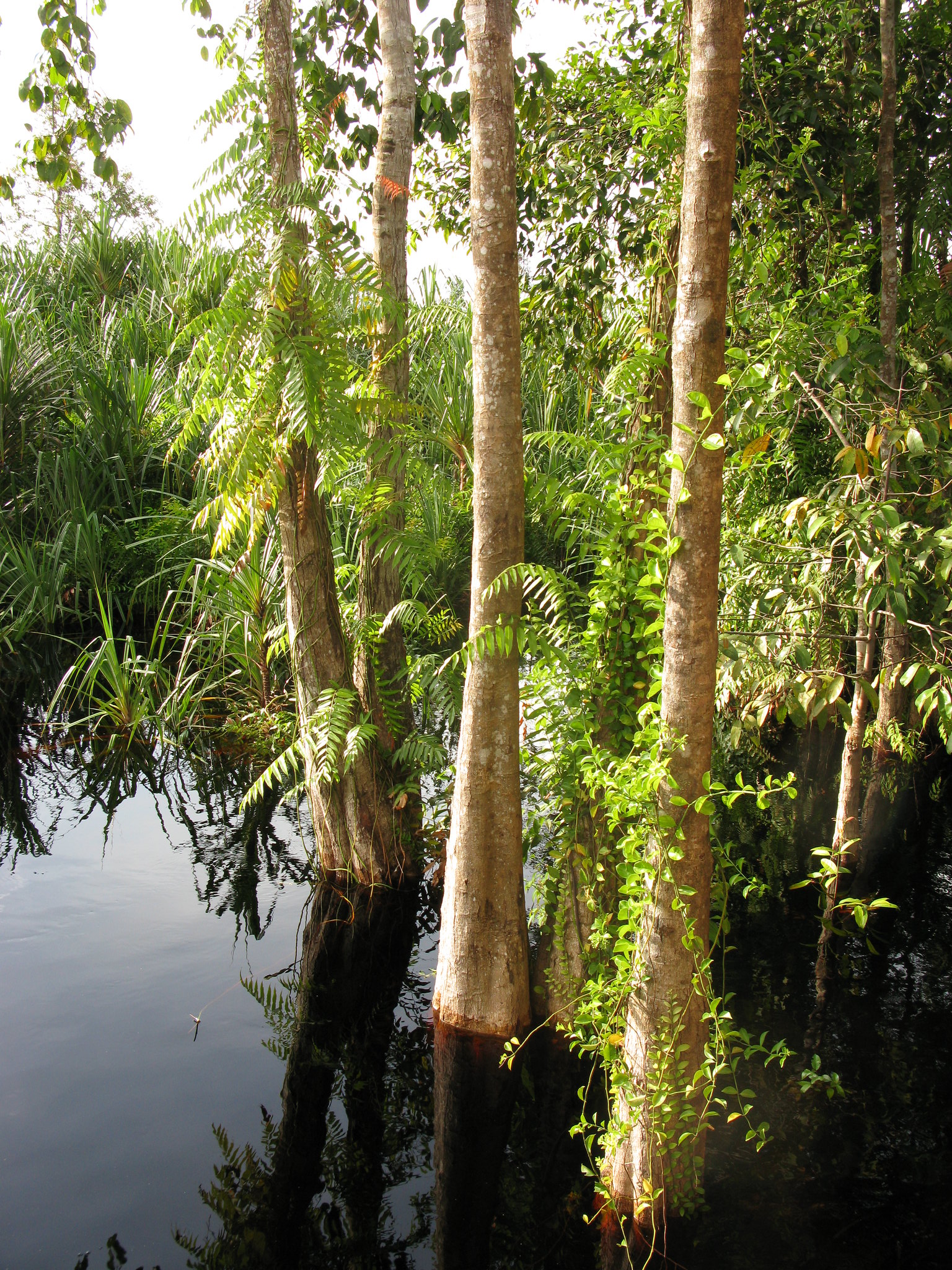
Peat swamp forest in Indonesia (c)AusAid

